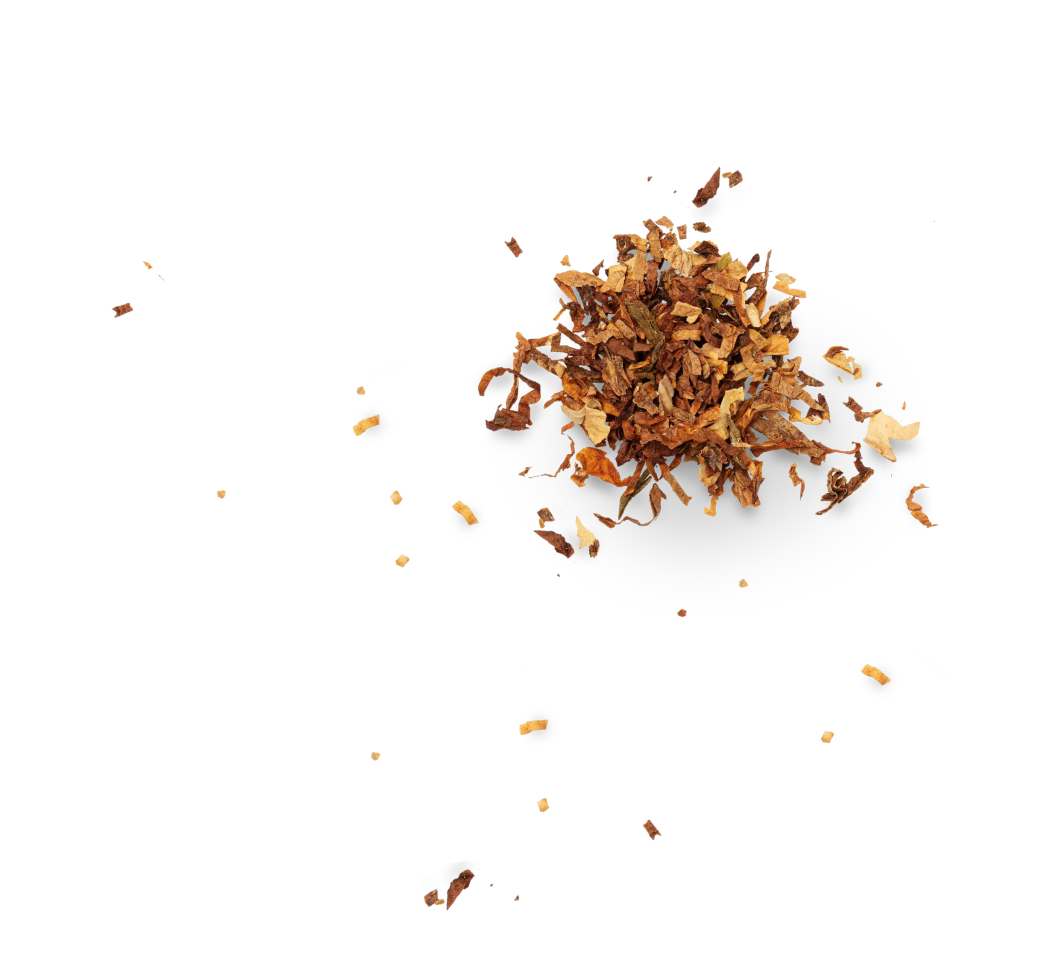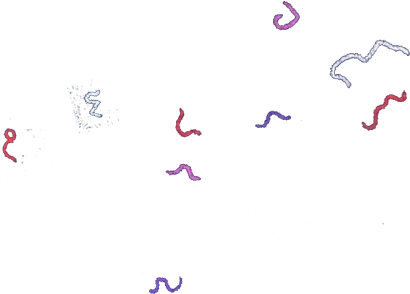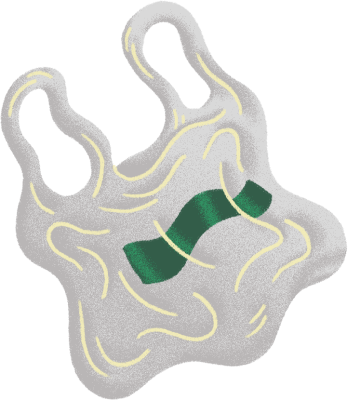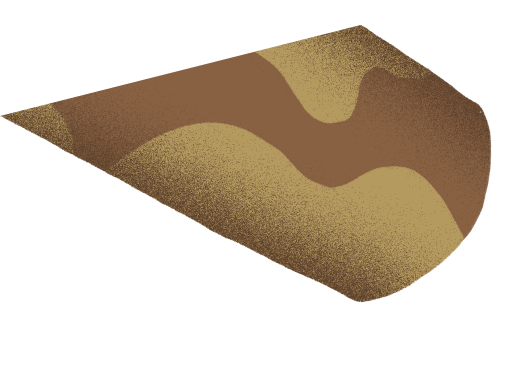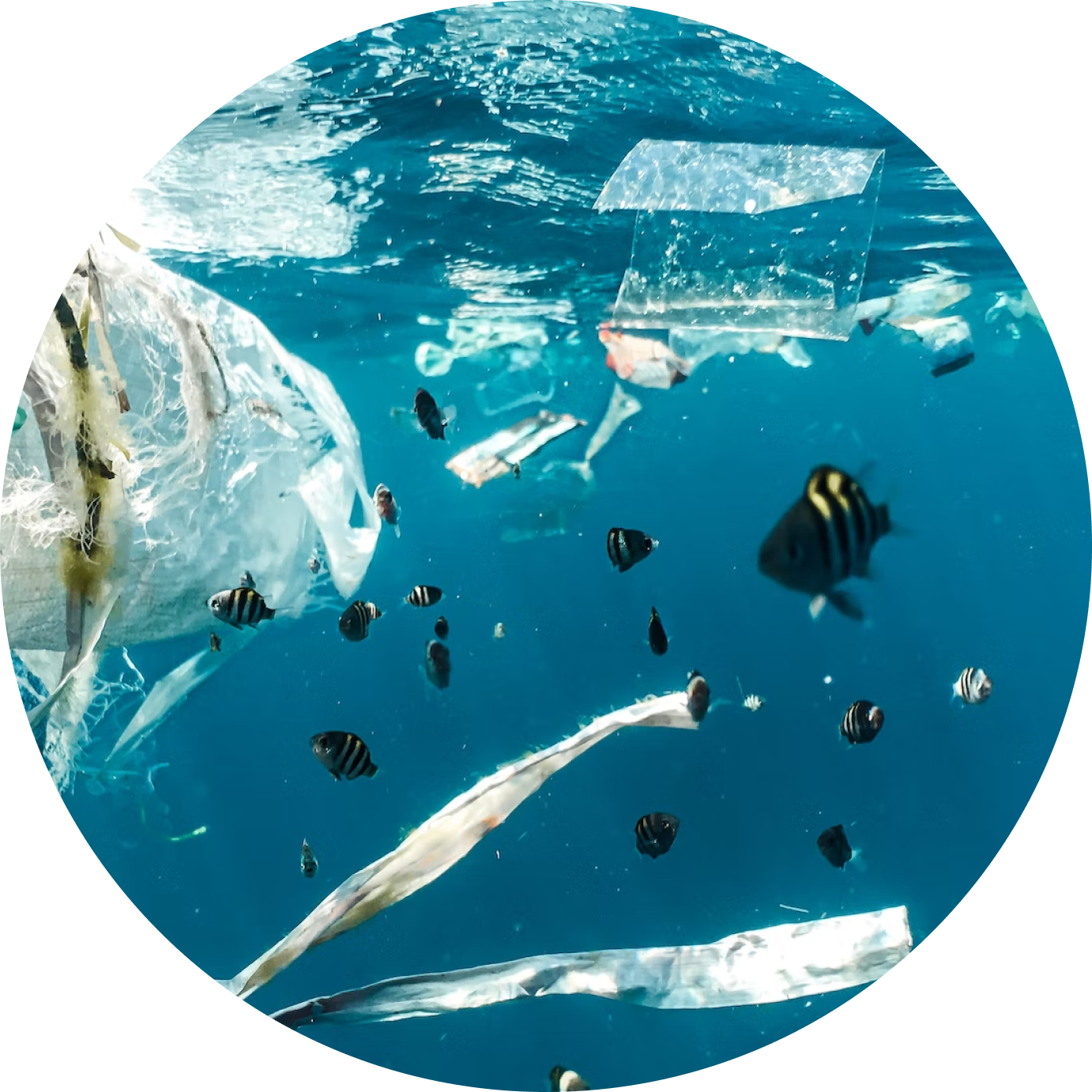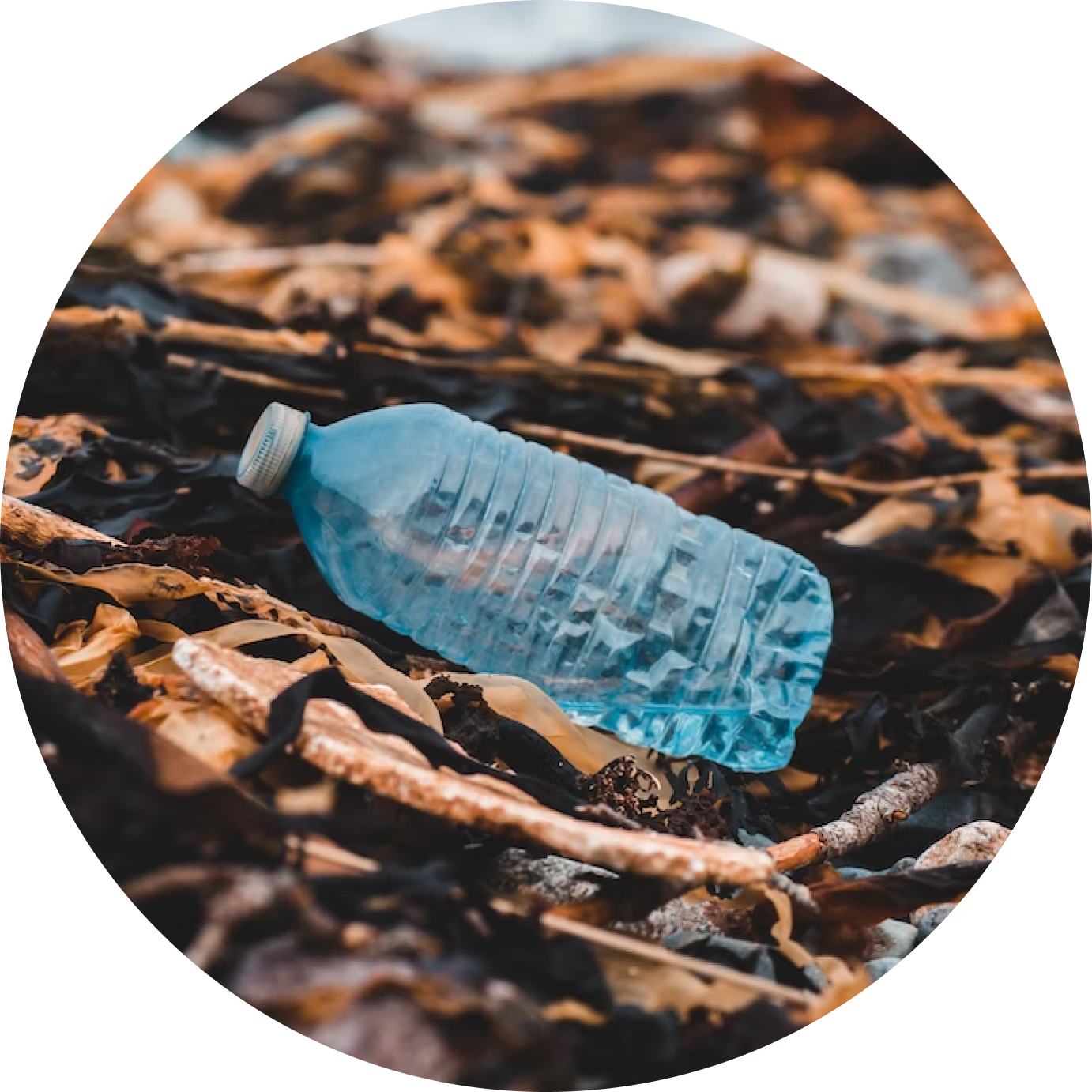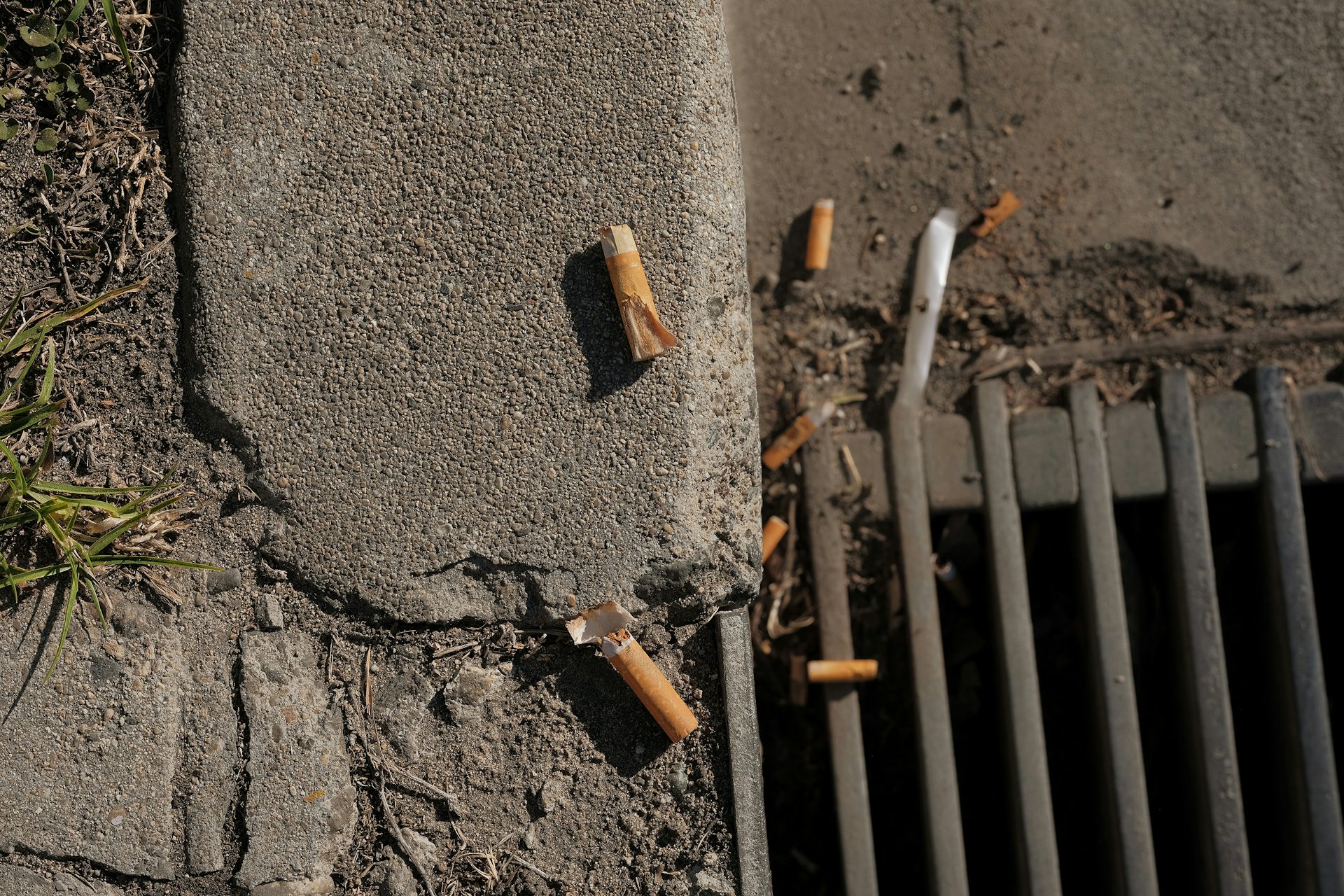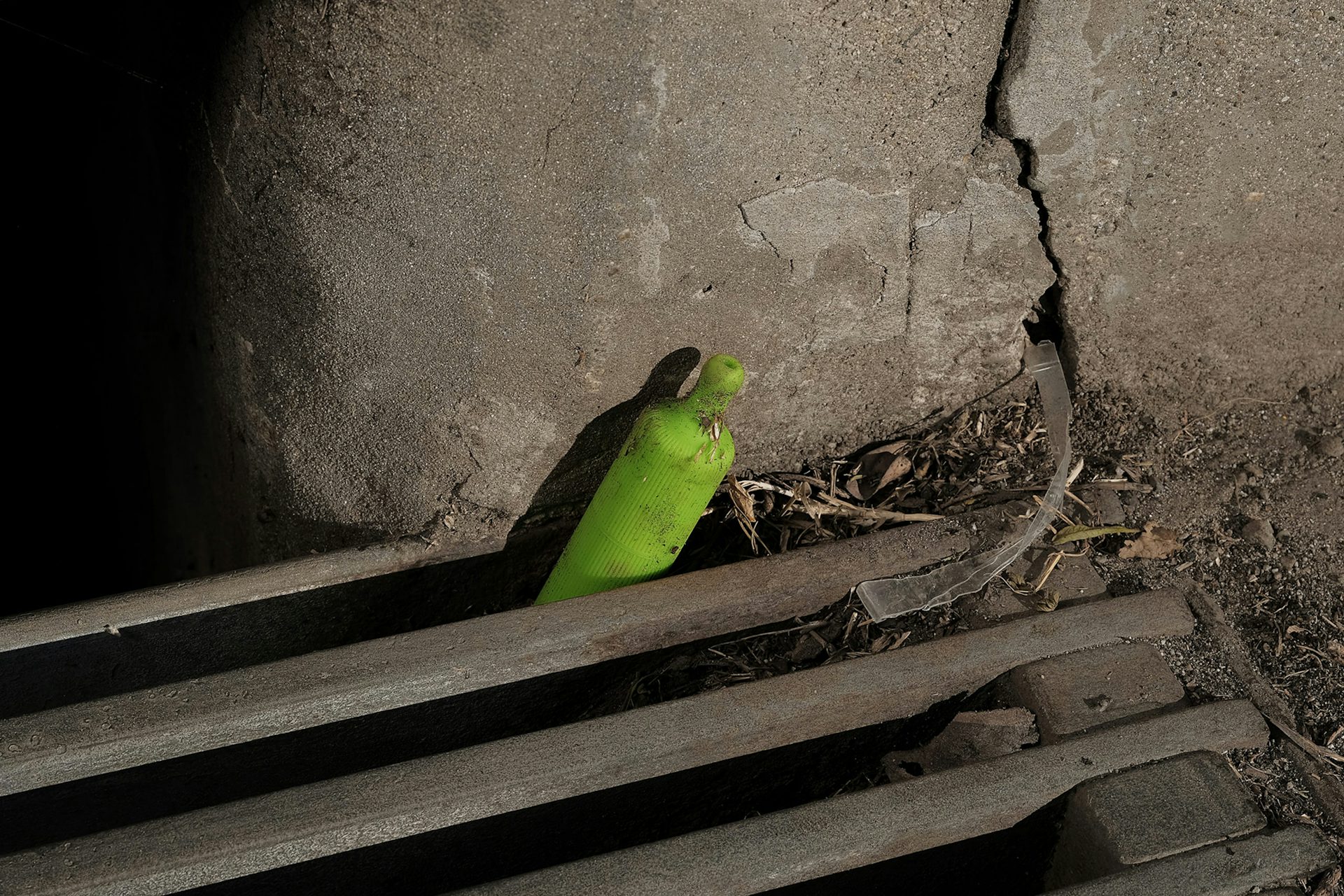Ngành thuốc lá giả vờ quan tâm đến việc bảo vệ con người và trái đất – nhưng thực sự chuyện họ quan tâm là lợi nhuận.49 Tạo ra sự thay đổi bằng cách bày tỏ sự phẫn nộ của mình.
![Đầu lọc của ngành thuốc lá là mối đe dọa đến sức khỏe của chúng ta – và trái đất – với vi nhựa[4]](/_next/image?url=%2Fcampaigns%2Flittle-big-lie%2Fhero-mobile.jpg&w=1920&q=90)
Lời Nói Dối Chết Người
Đầu lọc của ngành thuốc lá là mối đe dọa đến sức khỏe của chúng ta – và trái đất – với vi nhựa4
Ngành thuốc lá đã biết từ lâu rằng đầu lọc thuốc lá không giúp việc hút thuốc an toàn hơn.12 Đầu lọc thuốc lá được làm bằng vi nhựa và hầu như không thanh lọc gì.3 Trò lừa đảo đầu lọc của ngành thuốc lá khiến tất cả chúng ta gặp rủi ro, cho dù chúng ta có hút thuốc hay không. Vi nhựa từ chất thải thuốc lá đang làm ô nhiễm đất đai, thực phẩm và nguồn nước của chúng ta trên khắp thế giới và ngay tại California.56 Nghiên cứu cho thấy khi chúng tích tụ trong cơ thể chúng ta, vi nhựa có liên quan đến các bệnh đường ruột, vô sinh, và đột biến DNA.60561
Ngành thuốc lá đang khiến cuộc khủng hoảng nhựa toàn cầu trở nên tồi tệ hơn.8 Hãy khiến ngành thuốc lá phải chịu trách nhiệm cho lời nói dối chết người của họ.

Sự Thật
Lời nói dối của ngành thuốc lá về đầu lọc có lẽ trò lừa bịp nguy hiểm nhất.56
Ngành thuốc lá không bao giờ để sự thật cản trở lợi nhuận, và những lời nói dối của họ về đầu lọc thuốc lá có thể là điều nguy hiểm nhất từ trước đến nay.19 Ngành thuốc lá thậm chí đã đầu tư thời gian và tiền bạc để tạo ra đầu lọc thay đổi sắc màu để đánh lừa mọi người tin rằng họ có thể bảo vệ phổi khỏi các hạt mịn nguy hiểm.1019 Đó hoàn toàn là một trò lừa đảo vì cái gọi là đầu lọc thực tế chẳng thanh lọc gì cả.13
Lời nói dối có chủ ý của ngành thuốc lá đã gây bệnh và giết chết vô số người.1 Bây giờ, tất cả chúng ta đều gặp rủi ro vì vi nhựa từ đầu lọc thuốc lá đã gây ra một loại ô nhiễm thuốc lá đặc biệt nguy hiểm.1
Đầu lọc bằng vi nhựa khiến chúng ta gặp rủi ro.
Đầu lọc thuốc lá được làm từ hàng nghìn sợi vi nhựa – quá nhỏ để dọn sạch – và chúng có thể ở khắp mọi nơi.4 Không có gì ngạc nhiên vì mỗi năm ngành thuốc lá sản xuất ra con số đáng kinh ngạc là 6 nghìn tỷ điếu thuốc lá với thứ gọi là “đầu lọc”.12 Nhựa trong đầu lọc thuốc lá phân hủy sinh học như thế nào? Mấu chốt của vấn đề là nó không phân hủy.13 Đó cũng là cách ngành thuốc lá trở thành tổ chức hàng đầu gây ra cuộc khủng hoảng nhựa toàn cầu.8
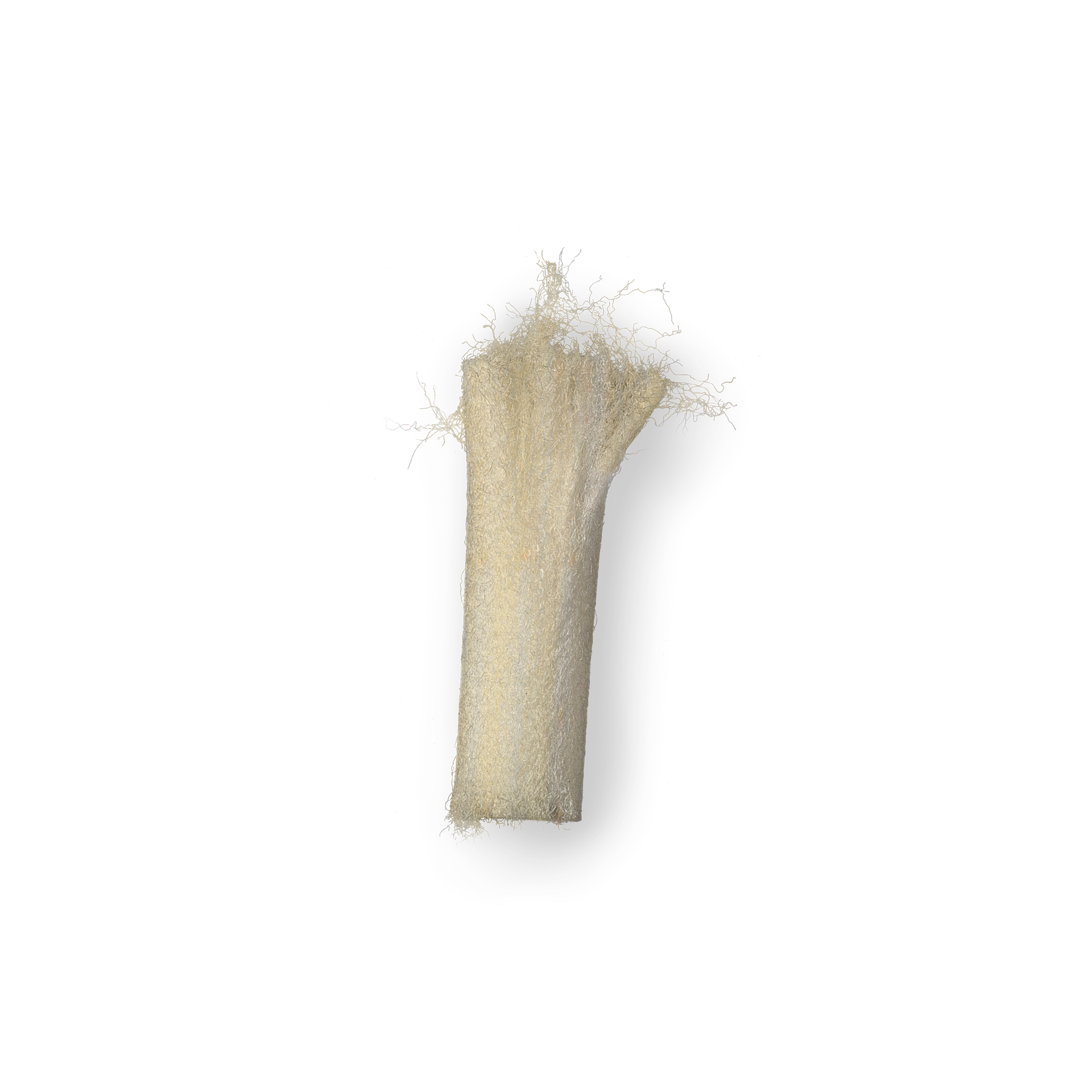
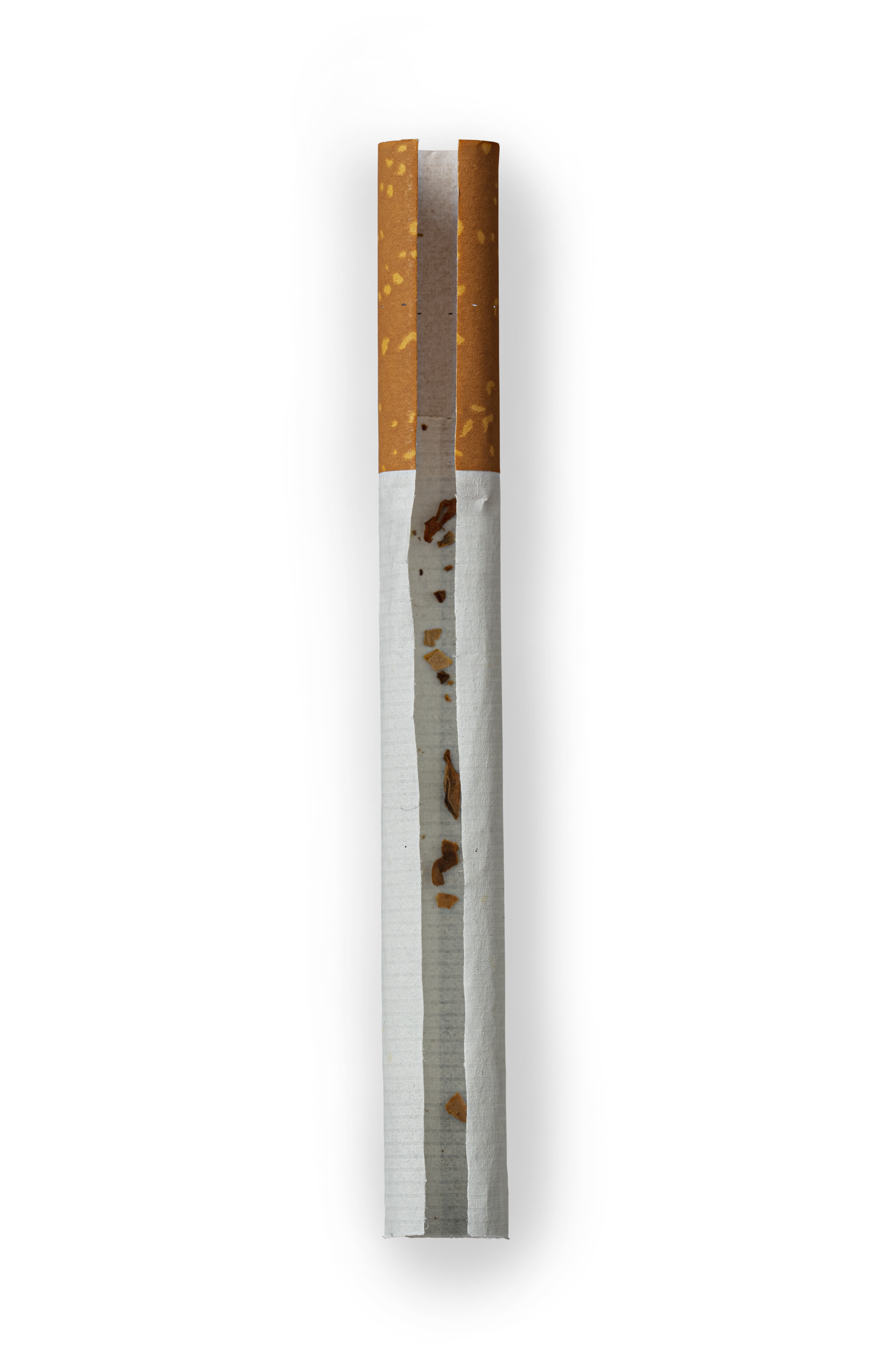
Đầu lọc [thuốc lá] là trò lừa chết người nhất trong lịch sử văn minh nhân loại. Chúng được đưa vào thuốc lá để tiết kiệm chi phí thuốc lá và đánh lừa mọi người… Tại Hoa Kỳ, mỗi năm có 400,000 người chết vì thuốc lá - và những loại thuốc lá đó hầu như đều có “đầu lọc.”
Chất thải thuốc lá không khác nhiều vấn đề khác trong cộng đồng, khi gánh nặng đè lên các cộng đồng có thu nhập thấp, cộng đồng người da đen và da nâu, những nhóm người từ xưa đến nay đã luôn phải chịu gánh nặng của việc tiếp xúc với chất độc.
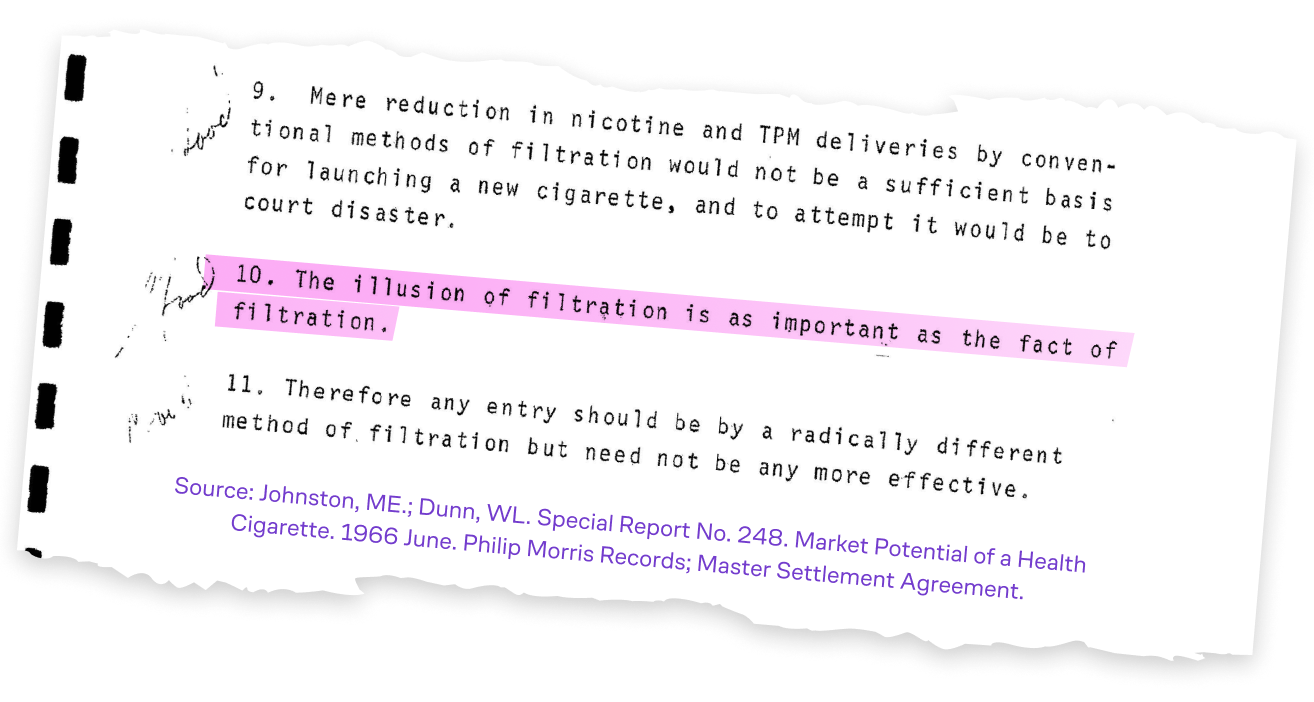
Trò bịp #1: Ngành thuốc lá lừa khách hàng với đầu lọc thuốc lá vô dụng.1019
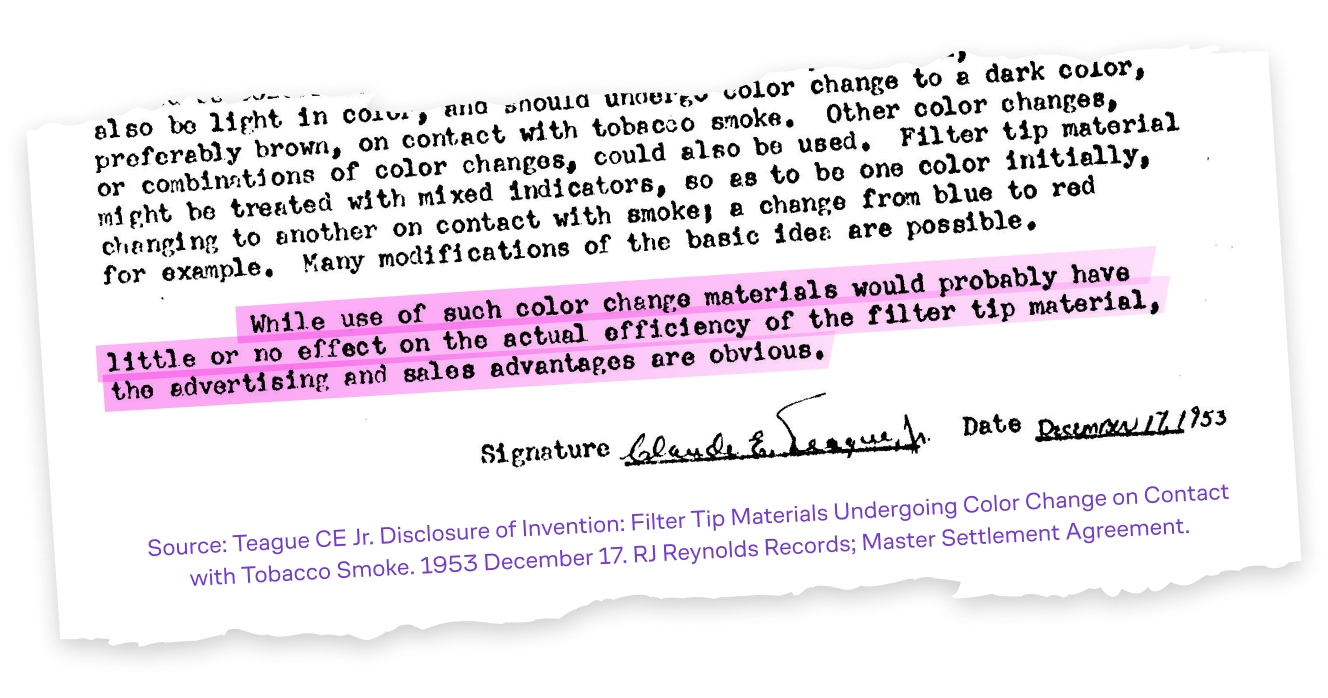
Trò bịp #2: Đầu lọc chuyển màu của ngành thuốc lá đánh lừa khách hàng.68
Ngành thuốc lá luôn biết đầu lọc của họ không giúp thuốc lá an toàn hơn.12 Sau đó, họ phát hiện ra rằng các đầu lọc thực sự mang lại cho thuốc lá một hương vị nhẹ hơn, khiến chúng có vẻ “lành mạnh hơn” và cho phép mọi người hít sâu hơn.13 Ngành thuốc lá đã nắm bắt cơ hội để thu hút khách hàng mới và đầu tư nhiều thời gian, tiền bạc và nguồn lực hơn để nhân đôi trò lừa đảo “thuốc lá an toàn hơn” vốn đã rất nguy hiểm của họ.3334
Trong những năm 1950, một nhà hóa học từ R.J. Reynolds tên là Claude Teague đã phát triển “đầu lọc Teague” giúp chuyển đầu lọc từ trắng sang nâu.29 Sự thay đổi màu sắc đánh lừa mọi người tin rằng đầu lọc bảo vệ phổi từ những hóa chất độc hại trong thuốc lá.2
Sự thật là, bất kể chúng chuyển sang màu gì, các “đầu lọc” thực tế không thanh lọc gì và thậm chí còn có liên quan đến một loại ung thư phổi cụ thể.33536
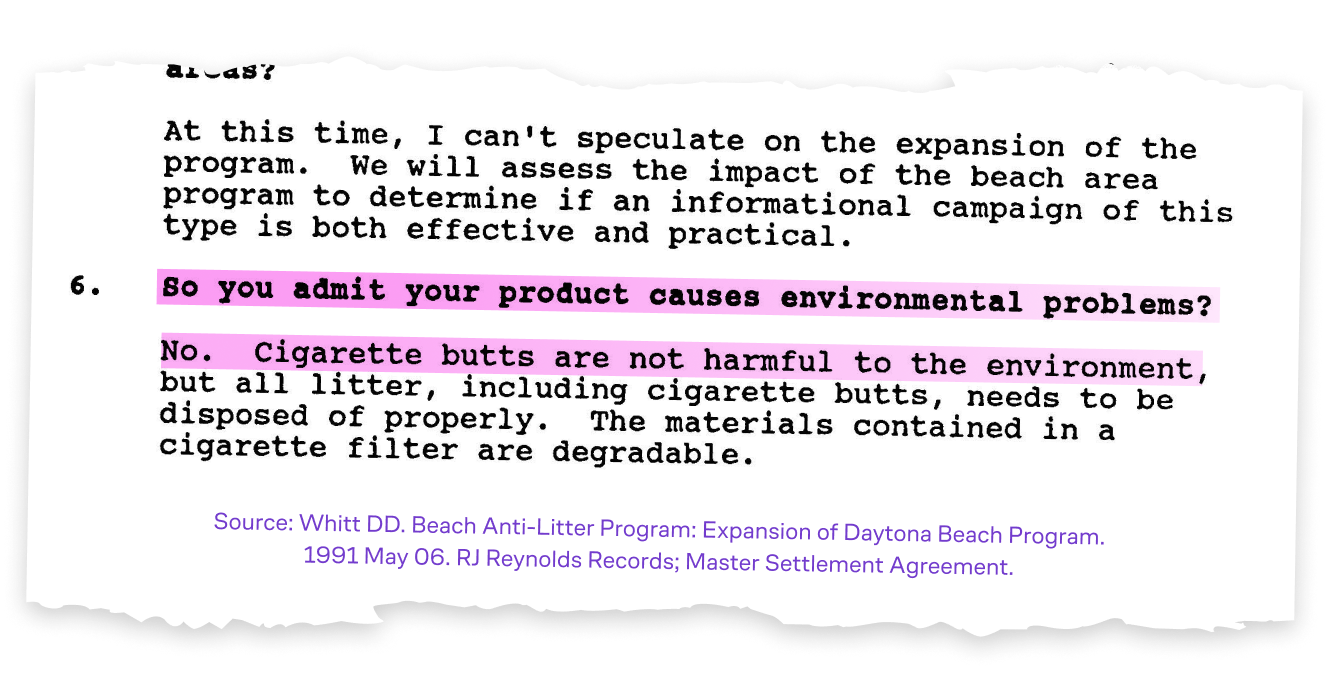
Trò bịp #3, Tẩy Não: ngành thuốc lá thẳng thừng phủ nhận việc sản phẩm của họ gây hại cho môi trường.13
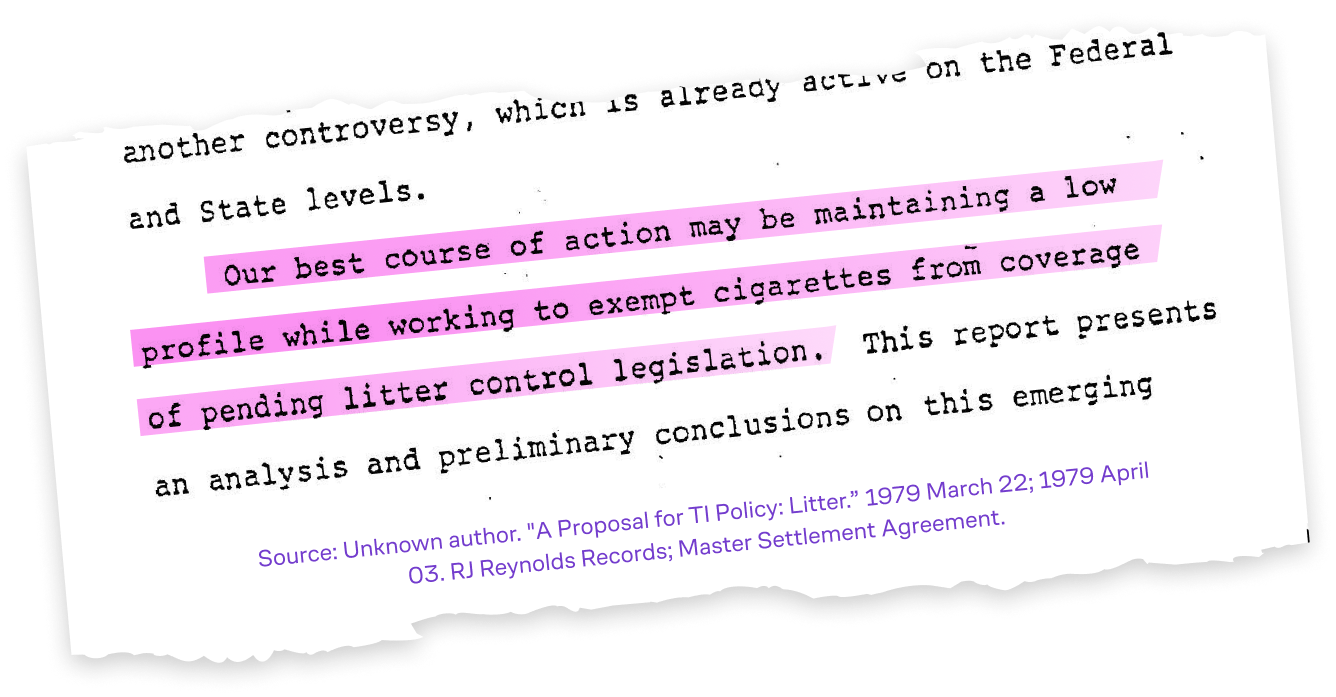
Trò bịp #4: Ngành thuốc lá tránh né trách nhiệm về chất thải thuốc lá độc hại.
Những mối nguy hại
Thật đáng sợ khi nghĩ rằng vi nhựa từ đầu lọc thuốc lá có thể khiến bạn hoặc người thân bị bệnh. Dưới đây là một số rủi ro mà tất cả chúng ta phải đối mặt vì ngành thuốc lá giăng mắt những lời nói dối nguy hiểm.
Đột biến DNA60
Vô sinh60
Vi nhựa đang làm ô nhiễm thực phẩm và nguồn nước của chúng ta
Vi nhựa có thể tồn tại trong cơ thể chúng ta
Ô nhiễm thuốc lá là một hình thức bất công chủng tộc
Ô nhiễm thuốc lá là độc hại, và hơn ai hết các khu dân cư có thu nhập thấp và cộng đồng da màu đặc biệt có nguy cơ mắc các vấn đề sức khỏe liên quan đến chất thải thuốc lá.12572 Lý do là, khi ngành thuốc lá không ngừng nhắm mục tiêu vào các cộng đồng này, hàm lượng nicotin, benzen và kim loại nặng, cao quá mức chấp nhận được, sẽ tích tụ trong môi trường và khiến mọi người gặp rủi ro.5455565725
 ,
,Bạn có thể sẽ ngạc nhiên khi biết người M<span class="browser-font">ỹ</span> nuốt vào khoảng hàng trăm nghìn hạt vi nhựa mỗi năm. Theo các nghiên cứu gần đây, vi nhựa đã được tìm thấy trong phổi, nhau thai và máu của con người; chúng có liên quan đến các vấn đề sinh sản, tổn thương đường ruột và thậm chí gây đột biến DNA.

Hãy lên tiếng để họ gánh trách nhiệm
Bày tỏ sự phẫn nộ của mình về lời nói dối do ngành thuốc lá gây ra. Bạn có thể tạo nên sự khác biệt bằng cách lên tiếng.
Thêm nhiều nội dung
Tin tức (tiếng Anh)
- Novotny TE, Bialous SA, Hill K, et al. Tobacco Product Waste in California: A White Paper. Accessed April 10, 2023.
- Harris B. The intractable cigarette 'filter problem'. Tob Control. 2011;20 (suppl 1):i10-i16. doi:10.1136/tc.2010.040113
- Proctor RN. Golden Holocaust: Origins of the Cigarette Catastrophe and the Case for Abolition. Berkeley, CA: University of California Press. 2011.
- Belzagui F, Buscio V, Gutiérrez-Bouzán C, Vilaseca M. Cigarette butts as a microfiber source with a microplastic level of concern. Sci Total Environ. 2021;762:144165. doi:10.1016/j.scitotenv.2020.144165
- Zarus GM, Muianga C, Hunter CM, Pappas RS. A review of data for quantifying human exposures to micro and nanoplastics and potential health risks. Sci Total Environ. 2021;756:144010. doi:10.1016/j.scitotenv.2020.144010
- Oliveri Conti G, Ferrante M, Banni M, et al. Micro- and nano-plastics in edible fruit and vegetables. The first diet risks assessment for the general population. Environ Res. 2020;187:109677. doi:10.1016/j.envres.2020.109677
- Poma A, Vecchiotti G, Colafarina S, et al. In vitro genotoxicity of polystyrene nanoparticles on the human fibroblast Hs27 cell line. Nanomaterials (Basel). 2019;9(9):1299. Published 2019 Sep 11. doi:10.3390/nano9091299
- Break Free From Plastic. Branded Vol. III: Demanding Corporate Accountability for Plastic Pollution. 2020. Accessed April 10, 2023.
- Kozlowski LT, O’Connor RJ. Cigarette filter ventilation is a defective design because of misleading taste, bigger puffs, and blocked vents. Tob Control. 2002;11(suppl 1):i40-i50. doi:https://doi.org/10.1136/tc.11.suppl_1.i40
- Ziv-Gal A, Flaws JA. Evidence for bisphenol A-induced female infertility: a review (2007-2016). Fertil Steril. 2016;106(4):827-856. doi:10.1016/j.fertnstert.2016.06.027
- Wang Y-L, Lee Y-H, Chiu I-J, Lin Y-F, Chiu H-W. Potent impact of plastic nanomaterials and micromaterials on the food chain and human health. Int J Mol Sci. 2020;21(5):1727. doi: 10.3390/ijms21051727
- Novotny TE, Slaughter E. Tobacco product waste: an environmental approach to reduce tobacco consumption. Curr Environ Health Rep. 2014;1(3):208-216. Published 2014 May 6. doi:10.1007/s40572-014-0016-x
- Novotny T, Lum K, Smith E, Wang V, Barnes R. Cigarettes butts and the case for an environmental policy on hazardous cigarette waste. Int J Environ Public Health. 2009;6(5):1691-1705. doi:10.3390/ijerph6051691
- Podraza KD, Director. Basic Principles of Cigarette Design and Function. Accessed April 7, 2023.
- Zumbado M, Luzardo OP, Rodríguez-Hernández Á, Boada LD, Henríquez-Hernández LA. Differential exposure to 33 toxic elements through cigarette smoking, based on the type of tobacco and rolling paper used. Environ Res. 2019 Feb;169:368-376. doi:10.1016/j.envres.2018.11.021
- Rabinoff M, Caskey N, Rissling A, Park C. Pharmacological and chemical effects of cigarette additives. Am J Public Health. 2007 Nov;97(11):1981-91. doi: 10.2105/AJPH.2005.078014
- Alpert HR, Agaku IT, Connolly GN. A study of pyrazines in cigarettes and how additives might be used to enhance tobacco addiction. Tob Control. 2016;25(4):444-450. doi:https://doi.org/10.1136/tobaccocontrol-2014-051943
- Prata JC. Airborne microplastics: consequences to human health? Environ Pollut. 2018;234:115-126. doi:10.1016/j.envpol.2017.11.043
- Choy CA, Robison BH, Gagne TO et al. The vertical distribution and biological transport of marine microplastics across the epipelagic and mesopelagic water column. Sci Rep. 2019;9:7843. doi: https://doi.org/10.1038/s41598-019-44117-2
- Rochman CM, Tahir A, Williams SL, et al. Anthropogenic debris in seafood: Plastic debris and fibers from textiles in fish and bivalves sold for human consumption. Sci Rep. 2015;5:14340. doi:10.1038/srep14340
- Zafeiridou M, Hopkinson NS, Voulvoulis N. Cigarette smoking: an assessment of tobacco’s global environmental footprint across its entire supply chain. Environ Sci Technol. 2018;52(15):8087-8094. doi:10.1021/acs.est.8b01533
- Hendlin YH. E-cigarettes and a new threat: How to dispose of them [blog]. The Conversation. October 23, 2018. Accessed July 7, 2020.https://www.universityofcalifornia.edu/news/e-cigarettes-and-new-threat-how-dispose-them
- Environmental Protection Agency (1980). CFR §261.33 Discarded commercial chemical products, off-specification species, container residues, and spill residues thereof.
- Ocean Conservancy, International Coastal Cleanup. 2022 Report: Connect + Collect. Washington, DC: Ocean Conservatory, International Coastal Cleanup; 2022. Accessed April 10, 2023.
- Marah M, Novotny TE. Geographic patterns of cigarette butt waste in the urban environment. Tob Control. 2011;20(Suppl 1):i42-i44. doi:10.1136/TC.2010.042424
- Berg CJ, Schleicher NC, Johnson TO, et al. Vape shop identification, density and place characteristics in six metropolitan areas across the US. Prev Med Reports. 2020;19. doi:10.1016/J.PMEDR.2020.101137
- Centers for Disease Control and Prevention. Diseases and Death. Updated July 29, 2022. Accessed July 25, 2024. https://archive.cdc.gov/#/details?url=https://www.cdc.gov/tobacco/data_statistics/fact_sheets/fast_facts/diseases-and-death.html
- Cigarette Filters. TobaccoTactics. Accessed April 4, 2023.
- Kennedy P. Who Made That Cigarette Filter? The New York Times. https://www.nytimes.com/2012/07/08/magazine/who-made-that-cigarette-filter.html#:~:text=In%20the%201950s%2C%20an%20RJ. Published July 6, 2012. Accessed March 24, 2022.
- Evans-Reeves K, Lauber K, Hiscock R. The “filter fraud” persists: the tobacco industry is still using filters to suggest lower health risks while destroying the environment. Tobacco Control. Published online April 25, 2021. doi:https://doi.org/10.1136/tobaccocontrol-2020-056245
- DUNN,WL; JOHNSON,ME JR. MARKET POTENTIAL OF A HEALTH CIGARETTE SPECIAL REPORT NO. 248. 1966 June. Philip Morris Records; Master Settlement Agreement. Unknown.
- Wang Y-L, Lee Y-H, Chiu I-J, Lin Y-F, Chiu H-W. Potent Impact of Plastic Nanomaterials and Micromaterials on the Food Chain and Human Health. International Journal of Molecular Sciences. 2020;21(5):1727. doi:10.3390/ijms21051727
- “The 5 Ways Tobacco Companies Lied about the Dangers of Smoking Cigarettes.” Truth Initiative,
- Industry Documents Library. www.industrydocuments.ucsf.edu. Accessed April 4, 2023.
- U.S. Department of Health and Human Services. The health consequences of smoking—50 years of progress: a report of the Surgeon General. Atlanta. 2014
- Song M-A, Benowitz NL, Berman M, et al. Cigarette filter ventilation and its relationship to increasing rates of lung adenocarcinoma. J Natl Cancer Inst. 2017;109(12). doi:10.1093/jnci/djx075
- Smith EA, McDaniel PA. COVERING THEIR BUTTS: RESPONSES TO THE CIGARETTE LITTER PROBLEM. Tob Control. 2011;20(2):100. doi:10.1136/TC.2010.036491
- “LITTER" (A PROPOSAL FOR TI POLICY). RJ Reynolds Records; Master Settlement Agreement. 1979 March 26.
- Smith EA, McDaniel PA. Covering their butts: responses to the cigarette litter problem. Tob Control. 2011;20(2):100. doi:10.1136/TC.2010.036491
- Home. World No Ashtray. Accessed March 23, 2022.
- Holm P. Ventilation Research – Overview by Types of Workplace: Philip Morris, 1998. http://legacy.library.ucsf.edu/tid/uhv70b00 (accessed 14 Aug 2009)
- Environmental Newsletter No. 30 Environmental Issue Tracking – Asia Pacific Region: Philip Morris, 1999.
- Tidy Britain Group. [Attitudes Towards Cigarette Disposal Outdoors]. Philip Morris, 1996.
- RJ Reynolds International. RJRI News Report. Wednesday, December 04, 1996: RJ Reynolds, 1996.
- PM Corporate Affairs: Robinson & Maites litter program development scope-of-work: Philip Morris, 1997. http://legacy.library.ucsf.edu/tid/bhm16c00 (accessed 14 Nov 2008).
- Corporate Affairs Gameplan: Philip Morris, 2002. http://legacy.library.ucsf.edu/tid/kir02c00 (accessed 2 Jul 2009).
- Stigler-Granados P, Fulton L, Nunez Patlan E, Terzyk M, Novotny TE. Global health perspectives on cigarette butts and the environment. Int J Environ Res Public Health. 2019;16(10):1858. Published 2019 May 26. doi:10.3390/ijerph16101858
- Smith EA, Novotny TE. Whose butt is it? tobacco industry research about smokers and cigarette butt waste. Tob Control. 2011;20(suppl 1):i2-i9. doi:10.1136/tc.2010.040105
- Dewhirst T. Co-optation of harm reduction by Big Tobacco. Tob Control. 2021;30(e1):e1-e3. doi:10.1136/TOBACCOCONTROL-2020-056059
- World Health Organization. Microplastics in drinking-water. Geneva: World Health Organization; 2019.
- Pauly JL, Stegmeier SJ, Allaart HA, et al. Inhaled cellulosic and plastic fibers found in human lung tissue. Cancer Epidemiol Biomarkers Prev. 1998;7(5):419-428.
- Leslie HA, van Velzen MJM, Brandsma SH, Vethaak D, Garcia-Vallejo JJ, Lamoree MH. Discovery and quantification of plastic particle pollution in human blood. Environ. Int.2022.
- Schwabl P, Köppel S, Königshofer P, et al. Detection of Various Microplastics in Human Stool: A Prospective Case Series. Ann Intern Med. 2019;171(7):453-457. doi:10.7326/M19-0618
- Disparities in Point-of-Sale Advertising and Retailer Density – Counter Tobacco. countertobacco.org. Accessed April 7, 2023.
- Truth Initiative. Why tobacco is a racial justice issue. Published August 3, 2020. Accessed July 8, 2024. https://truthinitiative.org/research-resources/targeted-communities/why-tobacco-racial-justice-issue
- Yu D, Peterson NA, Sheffer MA, Reid RJ, Schnieder JE. Tobacco outlet density and demographics: Analysing the relationships with a spatial regression approach. Public Health. 2010;124(7):412-416. doi:https://doi.org/10.1016/j.puhe.2010.03.024
- Public Health Law Center. Tobacco Product Waste: A Public Health and Environmental Toolkit. Law and Policy Partnership to End the Commercial Tobacco Epidemic. Published April 2022.
- World Health Organization. Tobacco and its environmental impact: an overview. Geneva: World Health Organization;2017.
- United Nations Environment Programme. Plastic planet: How tiny plastic particles are polluting our soil. unep.org. December 22, 2021. Accessed March 24, 2022.
- Campanale C, Massarelli C, Savino I, Locaputo V, Uricchio VF. A detailed review study on potential effects of microplastics and additives of concern on human health. Int J Environ Res Public Health. 2020;17(4):1212. Published 2020 Feb 13. doi:10.3390/ijerph17041212
- Berg CJ, Schleicher NC, Johnson TO, et al. Vape shop identification, density and place characteristics in six metropolitan areas across the US. Prev Med Reports. 2020;19. doi:10.1016/J.PMEDR.2020.101137
- Berg CJ, Schleicher NC, Johnson TO, Barker DC, Getachew B, Weber A, et al. Vape shop identification, density and place characteristics in six metropolitan areas across the US. Prev Med Rep. 2020 Sep 1;19:101137.
- Industry Documents Library. www.industrydocuments.ucsf.edu. Accessed April 19, 2023.
- Hu X, Biswas A, Sharma A, et al. Mutational signatures associated with exposure to carcinogenic microplastic compounds bisphenol A and styrene oxide. NAR Cancer. 2021;3(1). doi:10.1093/narcan/zcab004
- Zhang C, Chen J, Ma S, Sun Z, Wang Z. Microplastics may be a significant cause of male infertility. Am J Mens Health. 2022;16(3):155798832210965. doi:10.1177/15579883221096549
- Hirt N, Body-Malapel M. Immunotoxicity and intestinal effects of nano- and microplastics: a review of the literature. Particle and Fibre Toxicology. 2020;17(1). doi:https://doi.org/10.1186/s12989-020-00387-7
- Evans-Reeves, K., Lauber, K., & Hiscock, R. (2022). The “filter fraud” persists: The tobacco industry is still using filters to suggest lower health risks while destroying the environment. Tobacco Control, 31(e1). https://doi.org/10.1136/tobaccocontrol-2020-056245
- O’Connor, R. J., Bansal-Travers, M., Cummings, K. M., Hammond, D., Thrasher, J. F., & Tworek, C. (2015). Filter presence and tipping paper color influence consumer perceptions of cigarettes. BMC Public Health, 15(1). https://doi.org/10.1186/s12889-015-2643-z
- Slaughter, E., Gersberg, R. M., Watanabe, K., Rudolph, J., Stransky, C., & Novotny, T. E. (2011). Toxicity of cigarette butts, and their chemical components, to marine and freshwater fish. Tobacco Control, 20(1 SUPPL). https://doi.org/10.1136/tc.2010.040170
- Register, K. (2000). Cigarette Butts as Litter- Toxic as Well as Ugly? Underwater Naturalist, 25(2).
- Beutel, M. W., Harmon, T. C., Novotny, T. E., Mock, J., Gilmore, M. E., Hart, S. C., Traina, S., Duttagupta, S., Brooks, A., Jerde, C. L., Hoh, E., van de Werfhorst, L. C., Butsic, V., Wartenberg, A. C., & Holden, P. A. (2021). A review of environmental pollution from the use and disposal of cigarettes and electronic cigarettes: Contaminants, sources, and impacts. In Sustainability (Switzerland) (Vol. 13, Issue 23). https://doi.org/10.3390/su132312994
- Berg, C. J., Schleicher, N. C., Johnson, T. O., Barker, D. C., Getachew, B., Weber, A., Park, A. J., Patterson, A., Dorvil, S., Fairman, R. T., Meyers, C., & Henriksen, L. (2020). Vape shop identification, density and place characteristics in six metropolitan areas across the US. Preventive Medicine Reports, 19. https://doi.org/10.1016/j.pmedr.2020.101137
- Jacob H, Besson M, Swarzenski PW, Lecchini D, Metian M. Effects of Virgin Micro- and Nanoplastics on Fish: Trends, Meta-Analysis, and Perspectives. Environ Sci Technol. 2020;54(8):4733-4745. doi:10.1021/acs.est.9b05995
- Ocean Conservancy, International Coastal Cleanup. We Clean On, 2021 report. Washington, DC: Ocean Conservatory, International Coastal Cleanup; 2021.
- Moran, K.; Miller, E.; Mendez M.; Moore, S.; Gilbreath, A.; Sutton R.; Lin, D.. 2021. A Synthesis of Microplastic Sources and Pathways to Urban Runoff. SFEI Technical Report: SFEI Contribution # 1049. San Francisco Estuary Institute, Richmond, CA
- Fowles J, Barreau T, Wu N. Cancer and Non-Cancer Risk Concerns from Metals in Electronic Cigarette Liquids and Aerosols. Int J Environ Res Public Health. 2020;17(6):2146. doi:10.3390/ijerph17062146.
- Hendlin YH. Alert: Public Health Implications of Electronic Cigarette Waste. Am J Public Health. 2018;108(11):1489-1490. doi:10.2105/AJPH.2018.304699.
- Forster M. What Happens When You Throw Away E-Cigarettes? Waste Management Magazine. https://wasteadvantagemag.com/what-happens-when-you-throw-away-e-cigarettes/. Published November 21, 2018. Accessed July 8, 2020.View Source
- Kang DH, Chen M, Ogunseitan OA. Potential environmental and human health impacts of rechargeable lithium batteries in electronic waste. Environ Sci Technol. 2013;47(10):5495-5503. doi:10.1021/es400614y.
- Truth Initiative. Tobacco and the Environment; 2023 https://truthinitiative.org/sites/default/files/media/files/2023/04/Truth_Environment%20FactSheet%20Update%202023_v3_FINAL.pdf
- Truth Initiative. Most young users put disposable e-cigarettes in trash, creating huge streams of toxic and hazardous waste, as companies fail to take responsibility. (n.d.). from https://truthinitiative.org/research-resources/harmful-effects-tobacco/most-young-users-put-disposable-e-cigarettes-trash. Accessed November 7, 2023.
- US Department of Commerce, National Oceanic and Atmospheric Administration. What is the most commonly found ocean litter? oceanservice.noaa.gov. https://oceanservice.noaa.gov/facts/most-common-ocean-litter.html. Published October 22, 2018. Accessed July 8, 2021.
- American Lung Association. Tobacco Facts 2024. Updated January 19, 2024. Accessed April 16, 2024. https://www.lung.org/research/sotc/facts#:~:text=Smoking%20is%20the%20number%20one,in%20the%20U.S.%20each%20year.
